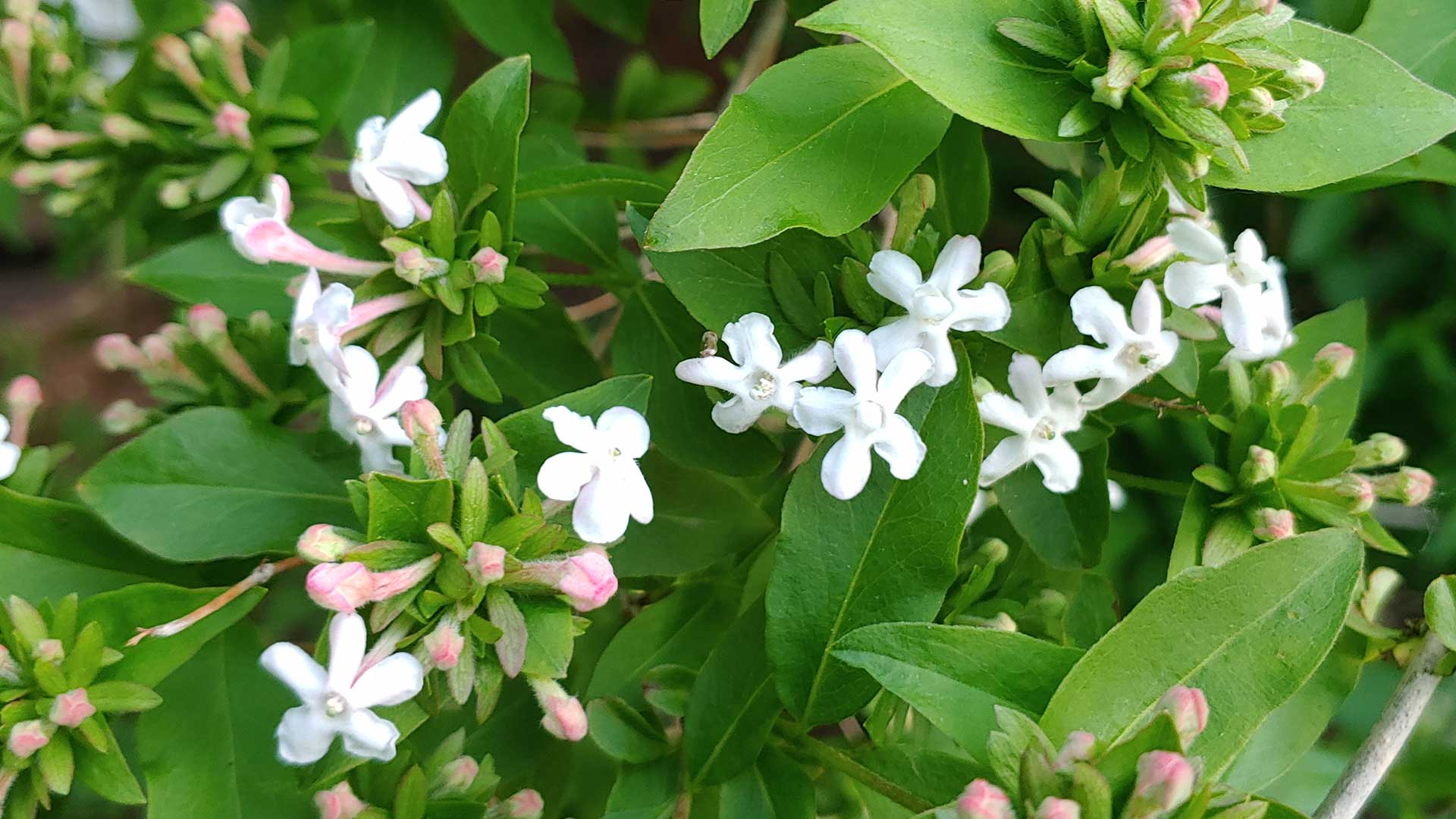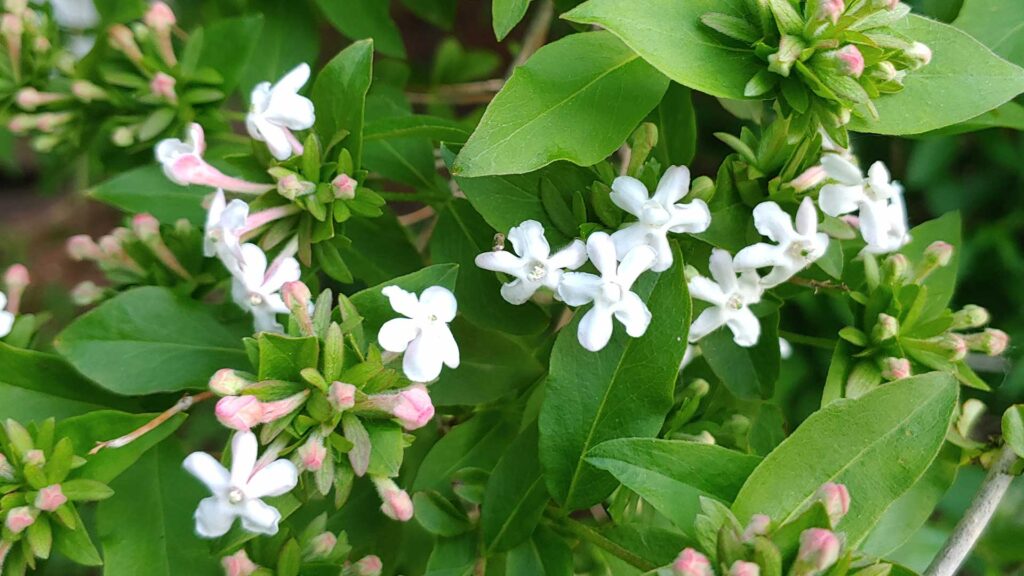Related to those gorgeous southern belle abelias, Abelia mosanensis brings cold hardiness, sweet fragrance, and lovely, early flowers to northern gardens. Introduced into my gardens about 10 years ago, this shrub has resisted deer and rabbit browse with insects only lightly noshing on the leaves. It has withstood eight inches of rain in one day. It laughed at minus 40-degrees F. This is one tough plant. Will that change as it becomes a fixture in the landscape? Possibly. But why borrow trouble. Enjoy it for the pleasure and ease it brings.
Abelia mosanensis is believed to have originated in the Mangsan mountain region in southeastern South Korea and was introduced after a mid-1920’s plant hunt. Southern US gardeners are lucky to have so many other beautiful Abelia cultivars from which to choose as Abelia mosanensis appears to prefer cooler climes. For the northern US growing regions, it is an easy shrub to place and grow. It has shown minimal wear and tear from weather, soil, and sun extremes. Early care results in a happy, hardworking landscape plant. Most essential is to keep the roots moist for the first and second years after planting. Abelia m. will grow in full sun to almost full, heavy shade. Well-drained soils with slightly acid to alkaline pH will work as a base. Fertilize as dictated by soil tests. Once happily growing, let them be. They will adapt well, becoming quite tolerant of the extreme northern conditions when established.
Pruning Abelia m. is easy. Be mindful of timing as the flowers develop on old wood. Pruning right after flowering will ensure a yearly floral display. The scope of the pruning can be severe cutting back to a light shaping. This is a hack and whack shrub – it will take what you dish out. If trimmed back every spring after flowering, expect from three to five feet of growth for the season. If a year is skipped, the shrub will respond with increases in height and girth. If ignored for five or six years, it will top out at about eight to nine feet tall and ten feet wide. If absolutely nothing is done to it, it will get big and eventually develop a rangy habit. If cut it in the spring before it flowers, expect no flowers but it will still grow. No matter what you do, it will grow, and it will flower, eventually.
The flowers, oh the flowers. Delicate looking tubular flowers start as tight, medium-green clusters. As flowering nears, the green coloring pushes out to deep pink as the buds plump. That pink bud color softens to a light, pinkish white flower when fully open. Heavenly scented, they will draw attention from yards away if the air is warm and the wind is right. Expect the blossoms mid-May to June.
Thank goodness there are cultivars starting to find their way into the market. Do not let the ugly container presence fool you. This shrub shines when planted and will develop a lovely arching habit once happily ensconced in the ground. Do buy when in flower to make sure the strong fragrance is desirable. Try this one, you will be glad you did.

